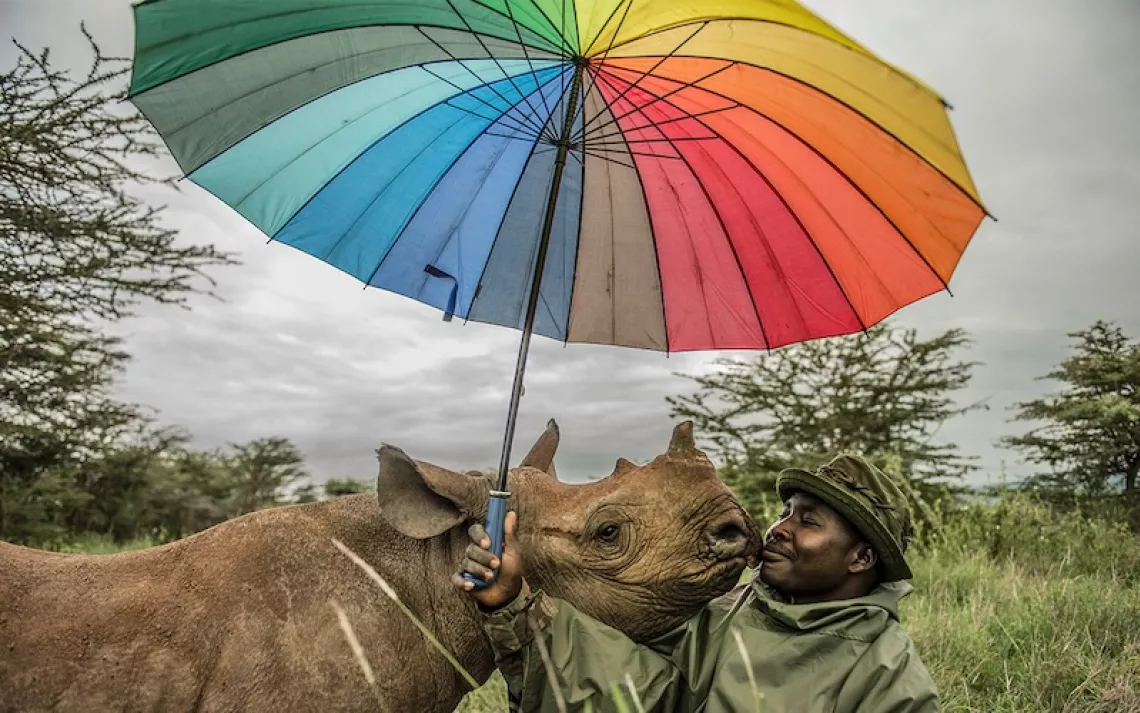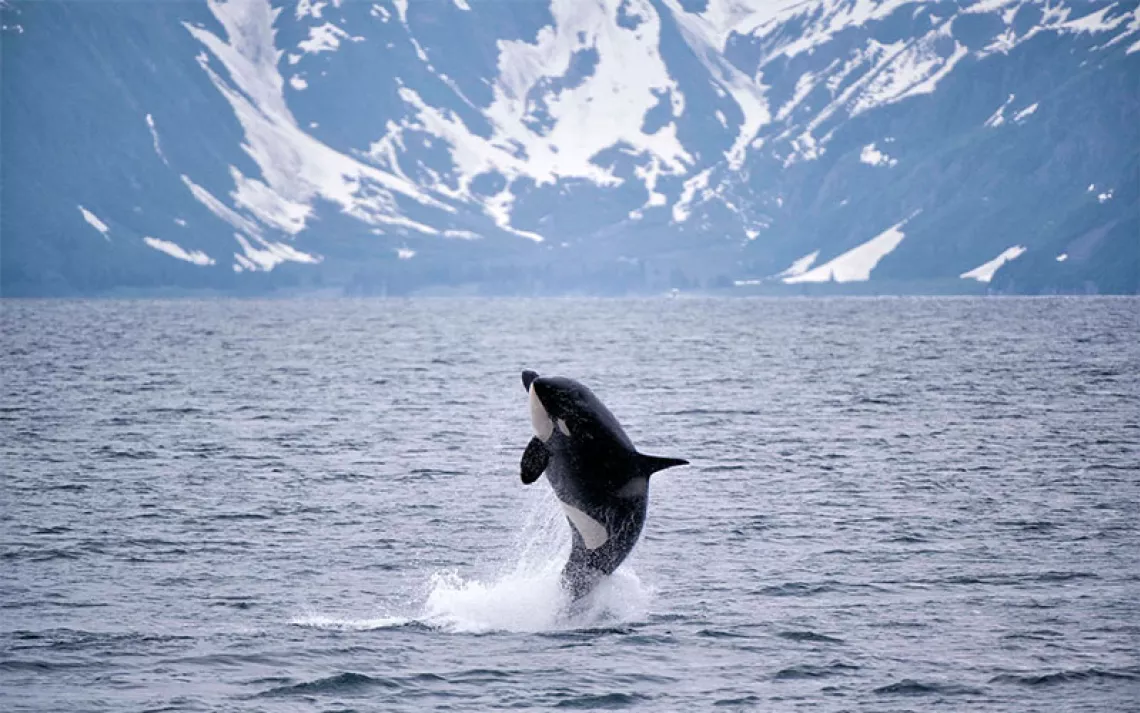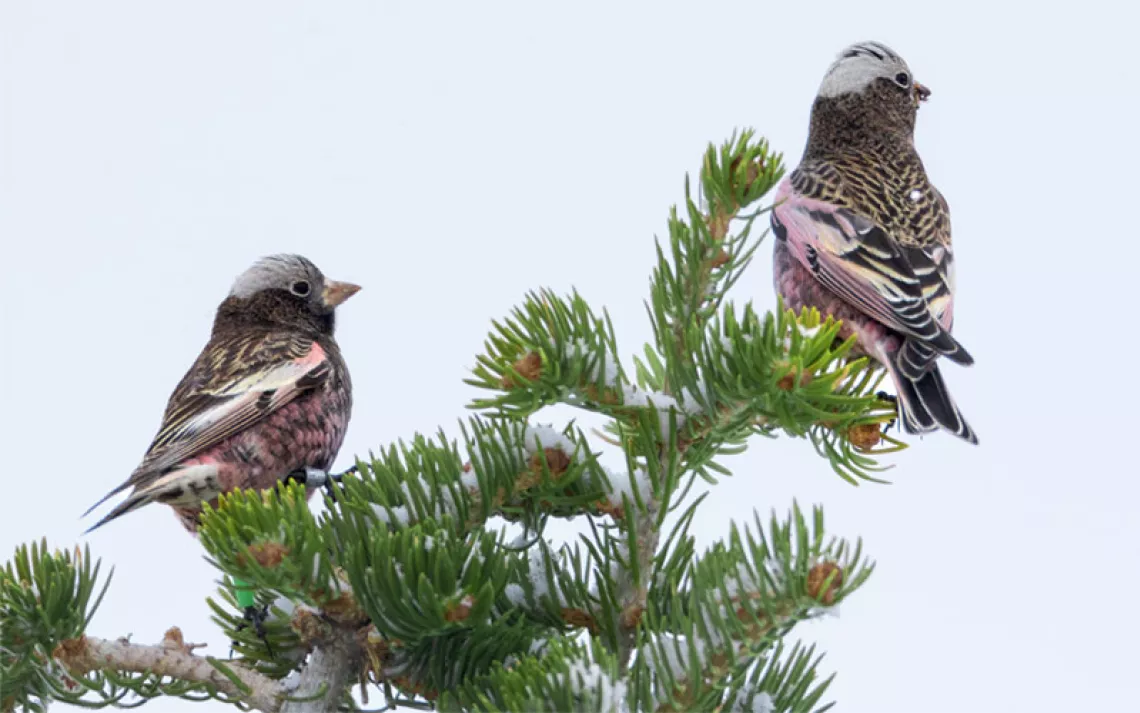Can Canada Save the Mountain Caribou Before It’s Too Late?
The iconic animal is at risk of extinction
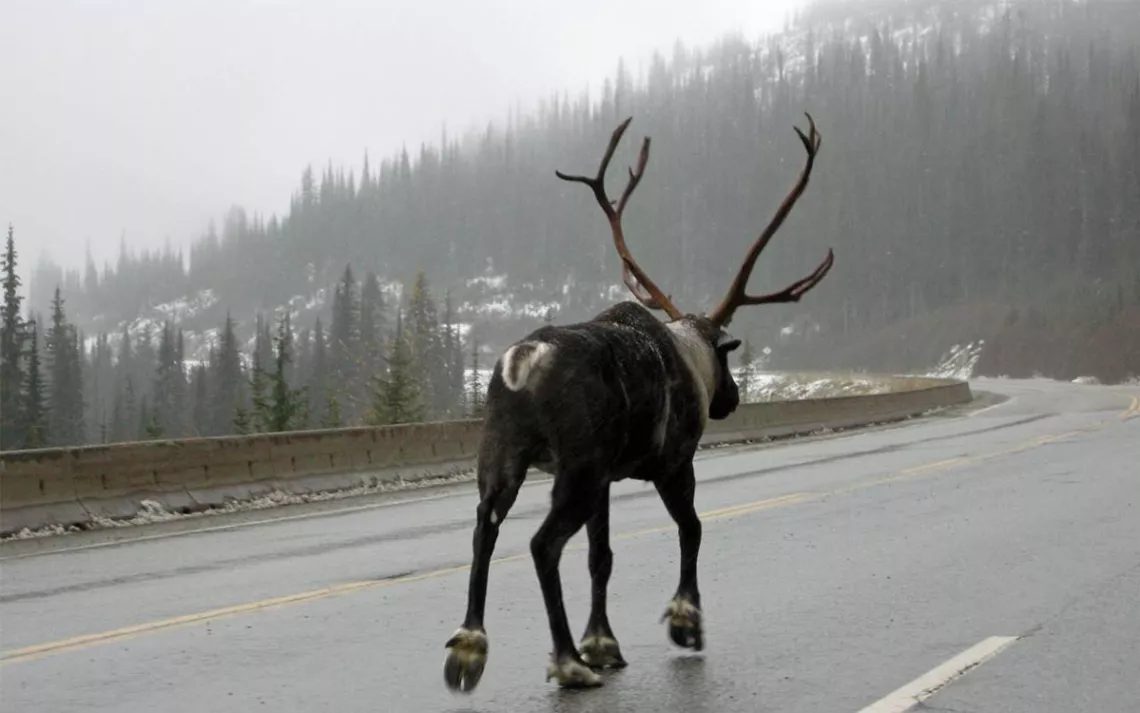
A lone bull in the South Selkirk herd dodges traffic on BC's Highway 3 at Kootenay Pass. | Photos by Wildsight
On a frigid day last January, government biologist Leo DeGroot led a team deep into the southern Selkirk Mountains of British Columbia on a rescue mission. Between 2017 and 2018, the mountain caribou herd native to these rugged mountains had dwindled to just two cows. DeGroot and his team set out to save the animals, part of a two-stage plan that included capturing four others—two bulls and two cows—from the equally imperiled South Purcell herd, which had experienced a precipitous drop from 60 animals in the early 1990s to just four last year.
“These animals had no future. The herds are extirpated, functionally extinct,” DeGroot said from his office in Nelson, on the west arm of Kootenay Lake between the Selkirk and Purcell Mountains.
From mid-January to mid-February, the biologist organized two trips to truck a total of five sedated mountain caribou five hours to a staging area 60 miles north of the city of Revelstoke. From there, they used a helicopter to sling the animals across Lake Revelstoke to a maternity pen—a fenced enclosure where females and their newborn calves are kept safe from predators and given a fighting chance during the vulnerable first few months after birth.
On April 2, after three months in the maternity pen, the five transplanted caribou were released along with a cow and her calf that belong to the North Columbia herd, a relatively robust group of 150 animals that range between the northern Selkirk and Monashee Mountains surrounding the maternity pen.
“We were hoping they would follow this experienced cow, and it seemed to work,” DeGroot says.
It's a small success in one of BC's most pressing conservation challenges.
This is the 11th hour for British Columbia's southern mountain caribou. At the turn of the 20th century, scientists believe, there were between 30,000 and 40,000 caribou (Rangifer tarandus caribou) in BC. As of 2014, the federal government estimated the number of caribou at 5,800, in 38 subpopulations distributed among three groups: Northern, Central, and Southern.
The Southern Group, which traditionally ranges in the Columbia Mountains from Revelstoke to the United States border, is globally unique. These deep-snow specialists are the only subspecies of caribou or reindeer that in winter subsist entirely on arboreal lichen found in old-growth forests.
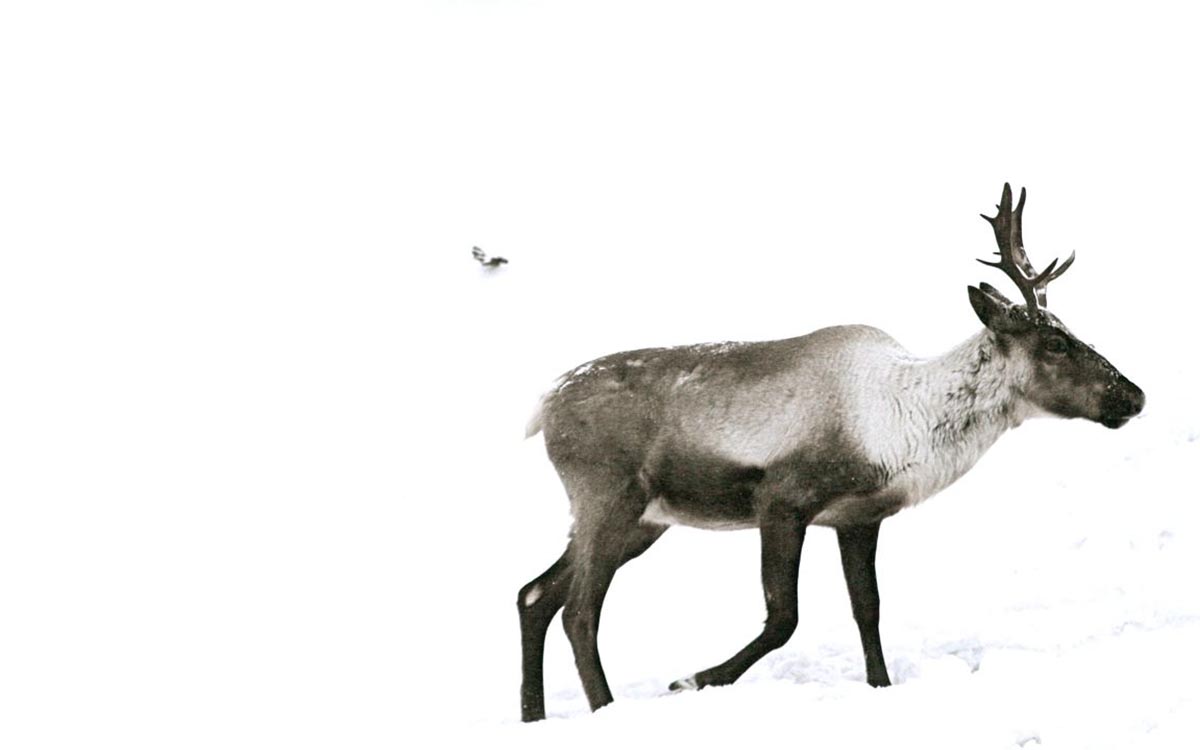
Caribou cow in the doomed South Selkirk herd.
Yet all of the isolated population units in the Southern Group are decreasing or extirpated. Since 2007, when BC launched the Mountain Caribou Recovery Implementation Plan, the province, feds, and industry have spent more than $12 million on a range of caribou conservation efforts, including publicly unpopular targeted predator culls, maternal penning, wolf collaring, and developing special operating guidelines for commercial and noncommercial regulation. More than 200,000 hectares inside and outside of national and provincial parks have been set aside as core mountain caribou habitat. However, MCRIP has fallen far short of the goal to boost the Southern Group total population to 2,500 animals. Current estimates put the population at 1,200. By most accounts, it's been a failure. That's why in May 2018, Canada's minister of environment and climate change, Catherine McKenna, put BC on notice: Do more to save this species or Ottawa will step in to impose conservation measures.
No politician wants an iconic species that graces the Canadian 25-cent coin to go extinct on their watch. Loss of critical, or core, habitat due to logging, oil and gas development, and other resource industries is largely responsible for the animal's decline. Human-caused landscape alteration has also resulted in a cascade of impacts that have upset the natural predator-prey balance in some areas, making the slow-reproducing caribou even more vulnerable. Logging gives rise to the growth of young trees and underbrush that attracts browsing animals like white-tailed deer and moose in large numbers. This in turn lure predators like wolves and cougar into caribou habitat.
Canada's Species at Risk Act lists BC's southern caribou as threatened. The legislation enables the federal government to issue an emergency order and make decisions about resource extraction, tourism, and other activities that are normally a provincial responsibility if it decides provincial efforts to recover an endangered species are falling short. (The Canadian government has issued an emergency order only twice before, in 2014 to protect the sage grouse and in 2016 for the western chorus frog.) McKenna has given a deadline of this summer for the province to develop a so-called Section 11 conservation agreement.
“This is an important species to the federal government,” says Robert Serrouya, a Revelstoke-based University of Alberta biologist who has researched large mammal ecology for two decades and is currently director of the Caribou Monitoring Unit. “And it's a very complex conservation problem.”
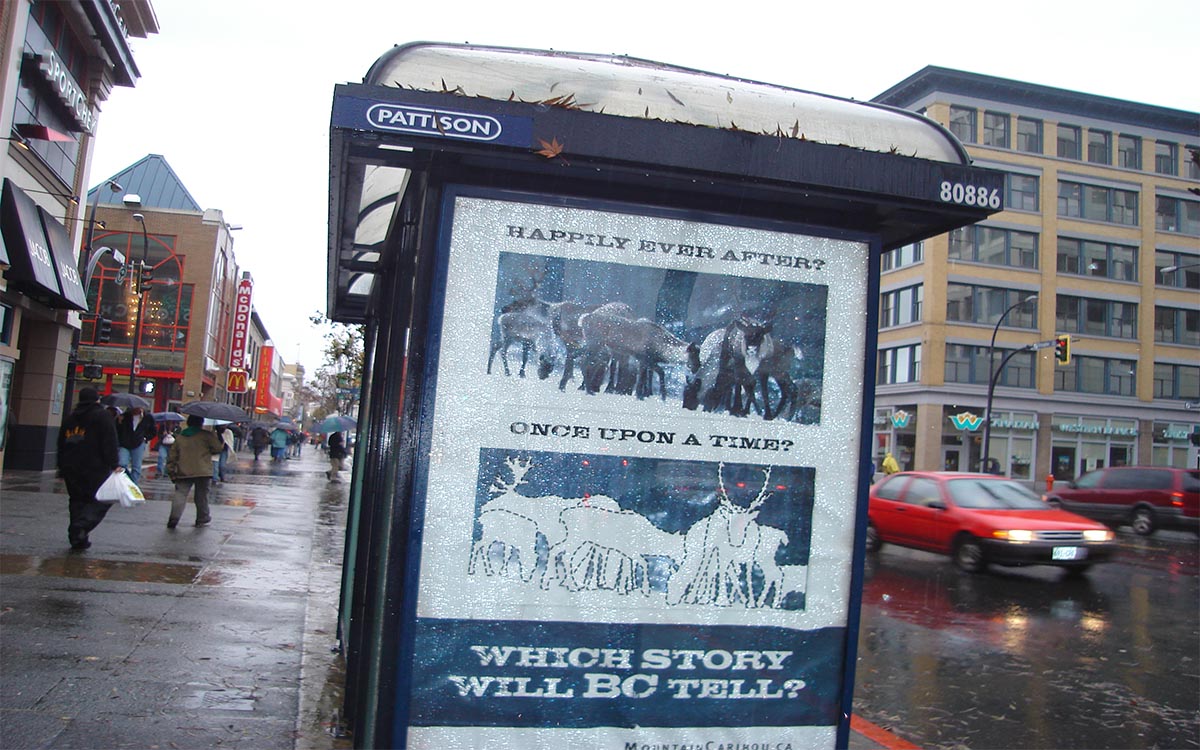
The Mountain Caribou Project tried many approaches to encourage BC to protect caribou habitat over the years, including this bus stop campaign in Victoria in the late 2000s.
DeGroot, Serrouya, and other caribou specialists have been put in the unenviable position of supporting the targeted killing of wolves and other predators to protect mountain caribou. However they all agree that predator culls are a stop-gap measure that will fail unless core caribou habitat is restored and protected. According to DeGroot, biologists are just starting to understand the importance of what he calls “matrix habitat,” or the land base around core habitat where forest practices can disrupt the predator-prey balance further threatening caribou.
“Mountain caribou are in a very difficult situation because they require large areas of habitat and there are many competing interests that are incompatible with caribou,” DeGroot says.
This past winter, the BC and federal governments released two draft conservation documents that remain open to public comment until the end of May. The first is with the West Moberly and Saulteau First Nations, two bands with territories north of Prince George that have been working independently to recover the Klinse-za herd using a combination of maternity penning, hunting bans, and habitat restoration. The government agreement proposes additional caribou conservation measures in West Moberly and Saulteau territories, including a reduction in forest harvesting by 300,000 cubic meters annually (one cubic meter roughly equals one telephone pole).
The second document is a draft caribou conservation agreement between the feds and province for the rest of BC's caribou herds. It is a wide-ranging agreement that covers everything from restricting motorized vehicle access in winter caribou habitat and reviewing hunting regulations to reducing primary prey in important caribou habitat, purchasing private land for habitat protection, and extending predator control into other areas. Sean Fraser, parliamentary secretary to the federal minister of environment and climate change, admits that both draft agreements have come under fire from community and industry leaders worried about economic impacts and restriction to the land base for recreation. At the same time, he says, there is widespread acknowledgment that mountain caribou are teetering on the edge.
“It’s clear to all parties involved that if we don’t act now, we could lose the caribou forever,” Fraser says. “Decades of inaction by successive provincial governments have resulted in the critical situation we face today. The government of Canada is required by law to step in to protect species at risk if other measures taken by the responsible province are not effective.”
Eddie Petryshen is conservation coordinator for Wildsight, an environmental group based in the East Kootenays. He calls mountain caribou an indicator species and says their decline and extirpation in southern BC has mirrored the destruction of the inland temperate forest. He's hopeful that the new conservation agreement spells better times ahead for mountain caribou, but only if discussions translate into real action.
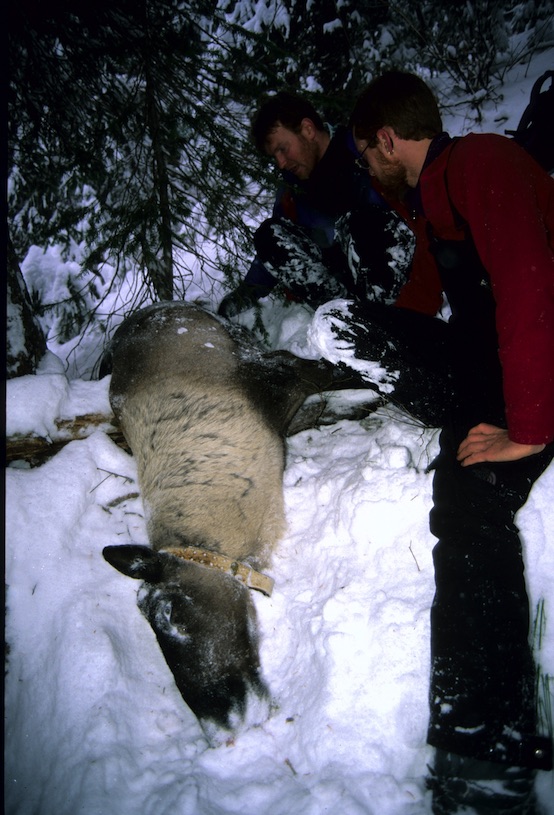
Field technician Cam Thompson beginning a necropsy on a collared South Purcell caribou likely killed by an avalanche in the early 2000s. Increased pressure from snowmobiles can force caribou from critical winter habitat into more-avalanche-prone areas, or into areas with lower-quality winter food.
“We support the conservation agreement in that at least the feds and province are working together. But we need action. The rubber will hit the road when they start developing the individual herd plans,” Petryshen says, adding that this process is supposed to be completed by 2020.
Still for some herds, 2020 might be too late. Back in Nelson, Leo DeGroot says it's hard to sidestep the fact that government neglect has brought caribou to this critical juncture. Rampant hunting from the time of European contact in the mid 1800s to the mid 1900s hit the animal hard. Industrial logging went to work on caribou habitat. By the time BC started studying and accurately counting caribou in the mountains that surround his home in Nelson, DeGroot says, they were already shoehorned into isolated herds.
“I'd like to think that we have the political and public will to save mountain caribou,” DeGroot says. “I've been working with this animal for almost 20 years.”
 The Magazine of The Sierra Club
The Magazine of The Sierra Club

